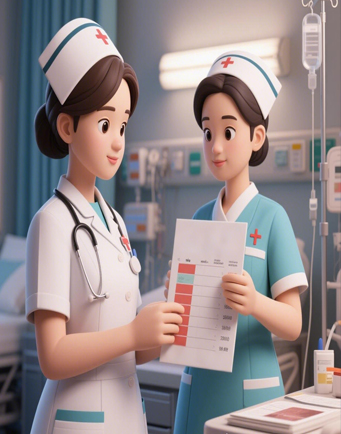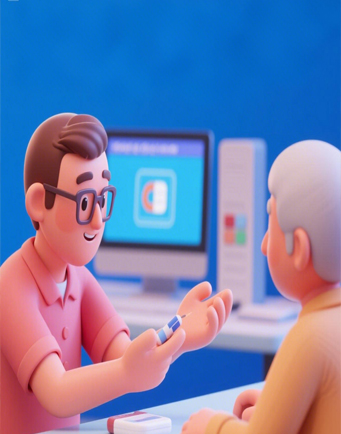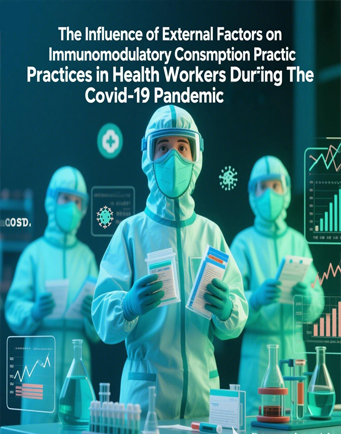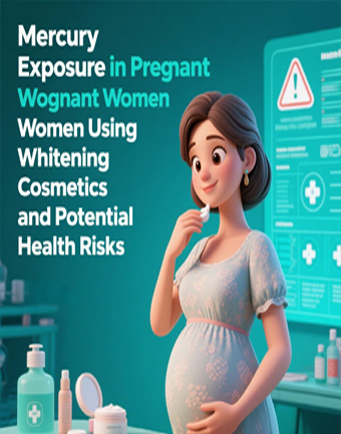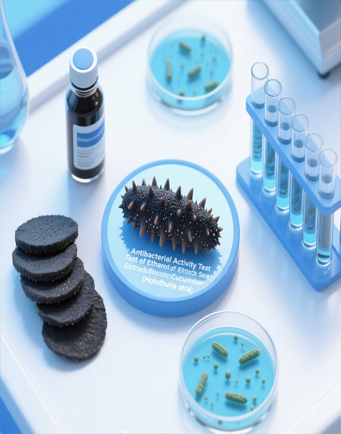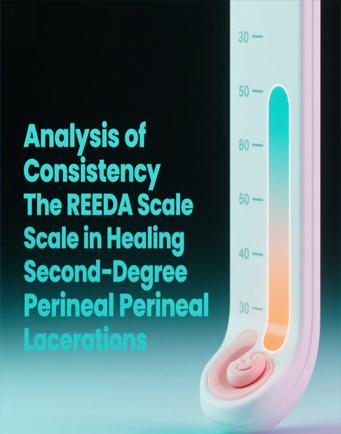The Effectiveness of Web-Based E-WoHealth on Compliance with Consumption of Iron Tablets in Young Women
Downloads
Utilization of technological media in the field of education and health can increase public knowledge in efforts to prevent anemia, especially in young women. One of the efforts to prevent anemia and increase adherence to taking iron tablets is by using Web-based educational media (E-WoHealth) about iron tablets supplemented with a tablet supplement consumption control card. This research aims to develop Web-based E-WoHealth media and its effect on the level of adherence to the consumption of blood supplement tablets. This study used the Research and development (R&D) method with the Borg & Gall development model and the Pre-experimental Design quantitative method using the One Group Pretest-Postest approach. The sample in this study was 80 girls in grades VII and VIII of SMP Negeri 11 Gorontalo City, determined by purposive sampling technique. Statistical tests used the McNemar test and the Chi-Square test. The results of the McNemar test showed differences in the measurement results before and after being given the Web-based E-WoHealth media with a p-value of 0.000 <0.05 meaning that the Web-based E-WoHealth media was effective in increasing adherence to consumption of iron supplement tablets (TTD) in class VII and class VIII girls and the results of the Chi-Square P-Value test were 0.822 > 0.05 meaning that there was no difference in adherence between class VII and VII girls. This study recommends the application of WEB-based E-WoHealth media equipped with an iron supplement control card to increase adherence and monitor iron supplement consumption.
Abu-Ouf, N. M., & Jan, M. M. (2015). The impact of maternal iron deficiency and iron deficiency anemia on child’s health. Saudi medical journal, 36(2), 146-149. https://doi.org/10.15537/smj.2015.2.10289
Amir, N., & Djokosujono, K. (2019). Faktor-faktor yang berhubungan dengan konsumsi tablet tambah darah (TTD) pada remaja putri di Indonesia: Literatur review. Jurnal Kedokteran Dan Kesehatan, 15(2), 119-129. https://doi.org/10.24853/jkk.15.2.119-129
Andriastuti, M., Ilmana, G., Nawangwulan, S. A., & Kosasih, K. A. (2020). Prevalence of anemia and iron profile among children and adolescent with low socio-economic status. International Journal of Pediatrics and Adolescent Medicine, 7(2), 88-92. https://doi.org/10.1016/j.ijpam.2019.11.001
Arianggara, A. W., Baso, Y. S., Ramadany, S., Manapa, E. S., & Usman, A. N. (2021). Web-based competency test model for midwifery students. International Journal of Health and Medical Sciences, 4(1), 1-7. https://doi.org/10.31295/ijhms.v4n1.380
Dhikale, P., Suguna, E., Thamizharasi, A., & Dongre, A. (2015). Evaluation of weekly iron and folic acid supplementation program for adolescents in rural Pondicherry, India. Int J Med Sci Public Health, 4(10), 1360-1365.
Divayana, D. G. H., Suyasa, P. W. A., & Sugihartini, N. (2016). Pengembangan media pembelajaran berbasis web untuk matakuliah kurikulum dan pengajaran di jurusan pendidikan teknik informatika Universitas Pendidikan Ganesha. Jurnal Nasional Pendidikan Teknik Informatika: JANAPATI, 5(3), 149-157. https://doi.org/10.23887/janapati.v5i3.9922
Dubik, S. D., Amegah, K. E., Alhassan, A., Mornah, L. N., & Fiagbe, L. (2019). Compliance with weekly iron and folic acid supplementation and its associated factors among adolescent girls in Tamale Metropolis of Ghana. Journal of nutrition and metabolism, 2019. https://doi.org/10.1155/2019/8242896
Ghana Health Service. (2017). Iron & Folic Acid (IFA) Supplementation for Adolescent Girls and Women Participants. Ghana Health Service.
Gosdin, L., Sharma, A. J., Tripp, K., Amoaful, E. F., Mahama, A. B., Selenje, L., ... & Addo, O. Y. (2021). A school-based weekly iron and folic acid supplementation program effectively reduces anemia in a prospective cohort of Ghanaian adolescent girls. The Journal of nutrition, 151(6), 1646-1655. http://dx.doi.org/10.1093/jn/nxab024
Harding, K. L., Matias, S. L., Mridha, M. K., Moniruzzaman, M., Vosti, S. A., Hussain, S., ... & Stewart, C. P. (2017). Adherence to recommendations on lipid‐based nutrient supplement and iron and folic acid tablet consumption among pregnant and lactating women participating in a community health programme in northwest Bangladesh. Maternal & child nutrition, 13(1), e12252. https://doi.org/10.1111/mcn.12252
Herliah, A., Baso, Y. S., Hidayanty, H., Syarif, S., Aminuddin, A., & Bahar, B. (2022). Effect of Web-based She Smart Education Models on Adolescent Girl's Knowledge, Attitudes, and Practice About Obesity. International Journal of Health and Medical Sciences, 5(1), 50-55. https://doi.org/10.21744/ijhms.v5n1.1832
Januarisman, E., & Ghufron, A. (2016). Development of web-based learning media for natural science subjects for grade VII students. Journal of Educational Technology Innovation, 3(2), 166-182.
Jatmika, S. E. D., Jatmika, S. E. D., Maulana, M., KM, S., & Maulana, M. (2019). Pengembangan Media Promosi Kesehatan. Yogyakarta: K-Media.
Kementerian Kesehatan Republik Indonesia. (2018). Hasil Utama Riskesdas 2018. Jakarta: Kementerian Kesehatan Republik Indonesia.
Kementerian Kesehatan Republik Indonesia. (2021). Profil Kesehatan Indonesia 2020. Jakarta: Kementerian Kesehatan Republik Indonesia
Kementerian Kesehatan Republik Indonesia. (2022). Profil Kesehatan Indonesia 2021. Jakarta: Kementerian Kesehatan Republik Indonesia
Logan, R. M., Johnson, C. E., & Worsham, J. W. (2021). Development of an e-learning module to facilitate student learning and outcomes. Teaching and Learning in Nursing, 16(2), 139-142. https://doi.org/10.1016/j.teln.2020.10.007
Madestria, N. P. O., Moedjiono, A. I., Tahir, M., Suarayasa, K., Nur, R., & Syam, A. (2021). Effect of education through video and packaging modifications of iron tablets on female adolescent behavior in the iron supplementation intake in SMPN 2 and SMPN 1 Parigi. Gaceta Sanitaria, 35, S127-S130. https://doi.org/10.1016/j.gaceta.2021.10.011
Nurhayati, Y. (2019). Pengembangan Modul Cetak 1000 Hari Pertama Kehidupan Untuk Pelatihan Kader Bina Keluarga Balita Di BKKBN. JIV-Jurnal Ilmiah Visi, 14(1), 27-38. https://doi.org/10.21009/JIV.1401.3
Perdana, F., Madanijah, S., & Ekayanti, I. (2017). Pengembangan media edukasi gizi berbasis android dan website serta pengaruhnya terhadap perilaku tentang gizi seimbang siswa sekolah dasar. Jurnal Gizi dan Pangan, 12(3), 169-178. https://doi.org/10.25182/Jgp.2017.12.3.169-178
Rahayu, F. S., Budiyanto, D., & Palyama, D. (2017). Analisis Penerimaan E-Learning Menggunakan Technology Acceptance Model (Tam)(Studi Kasus: Universitas Atma Jaya Yogyakarta). Jurnal Terapan Teknologi Informasi, 1(2), 87-98. https://doi.org/10.21460/Jutei.2017.12.20
Rumiyati, E., Pratiwi, E. N., & Nurjanah, S. (2020). Pengaruh pendidikan kesehatan dengan audio visual terhadap pengetahuan dan motivasi ibu menyusui secara eksklusif di puskesmas gambirsari surakarta. Jurnal Ilmu Kebidanan dan Kesehatan (Journal of Midwifery Science and Health), 11(2), 19-24. https://doi.org/10.52299/jks.v11i2.67
Shah, S. P., Shah, P., Desai, S., Modi, D., Desai, G., & Arora, H. (2016). Effectiveness and feasibility of weekly iron and folic acid supplementation to adolescent girls and boys through peer educators at community level in the tribal area of Gujarat. Indian Journal of Community Medicine: Official Publication of Indian Association of Preventive & Social Medicine, 41(2), 158.–161. https://doi.org/10.4103/0970-0218.173498
Sitohang, D. E. B., Sari, L. A., Herinawati, H., & Susilawati, E. (2022). Pengaruh Pemberian E-Book Terhadap Pengetahuan Dan Kepatuhan Ibu Hamil Tentang Konsumsi Tablet FE. NURSING UPDATE: Jurnal Ilmiah Ilmu Keperawatan, 13(3), 180-191.
Sudiarto, S., Niswah, F. Z., Pranoto, R. E. P., Hanifah, I., Enggardini, A. A., Masruroh, Z., & Muhammad, H. N. A. (2019). Optimalisasi Pendidikan Kesehatan Kepada Remaja Melalui Aplikasi Android Profoteen. Jurnal Kepemimpinan Dan Manajemen Keperawatan, 2(2), 74–79. https://doi.org/10.32584/jkmk.v2i2.380
Sajna, M. V., & Jacob, S. A. (2017). Adherence to weekly iron and folic acid supplementation among the school students of Thrissur corporation–a cross sectional study. International Journal Of Community Medicine And Public Health, 4(5), 1689-1694. https://doi.org/10.18203/2394-6040.ijcmph20171785
Silitonga, H. T. H., Salim, L. A., Nurmala, I., Hargono, R., Notobroto, H. B., Hartini, N., & Purwandini, S. (2023). The role of social support and interpersonal trust to improve compliance of iron supplementation amongst adolescent girls: A qualitative approach. The Nigerian postgraduate medical journal, 30(1), 75-80. https://doi.org/10.4103/npmj.npmj_277_22
Vir, S. C., Singh, N., Nigam, A. K., & Jain, R. (2008). Weekly iron and folic acid supplementation with counseling reduces anemia in adolescent girls: a large-scale effectiveness study in Uttar Pradesh, India. Food and Nutrition Bulletin, 29(3), 186-194. https://doi.org/10.1177/156482650802900304
World Health Organization. (2018). Weekly iron and folic acid supplementation as an anaemia-prevention strategy in women and adolescent girls: lessons learnt from implementation of programmes among non pregnant women of reproductive age (No. WHO/NMH/NHD/18.8). World Health Organization.
World Health Organization. (2021). Anemia In Women And Children. World Health Organization
World Health Organization. (2023). Adolescent and Young Adult Health. World Health Organization
Copyright (c) 2023 JURNAL INFO KESEHATAN

This work is licensed under a Creative Commons Attribution-NonCommercial-ShareAlike 4.0 International License.
Copyright notice
Ownership of copyright
The copyright in this website and the material on this website (including without limitation the text, computer code, artwork, photographs, images, music, audio material, video material and audio-visual material on this website) is owned by JURNAL INFO KESEHATAN and its licensors.
Copyright license
JURNAL INFO KESEHATAN grants to you a worldwide non-exclusive royalty-free revocable license to:
- view this website and the material on this website on a computer or mobile device via a web browser;
- copy and store this website and the material on this website in your web browser cache memory; and
- print pages from this website for your use.
- All articles published by JURNAL INFO KESEHATAN are licensed under the Creative Commons Attribution 4.0 International License. This permits anyone to copy, redistribute, remix, transmit and adapt the work provided the original work and source is appropriately cited.
JURNAL INFO KESEHATAN does not grant you any other rights in relation to this website or the material on this website. In other words, all other rights are reserved.
For the avoidance of doubt, you must not adapt, edit, change, transform, publish, republish, distribute, redistribute, broadcast, rebroadcast or show or play in public this website or the material on this website (in any form or media) without appropriately and conspicuously citing the original work and source or JURNAL INFO KESEHATAN prior written permission.
Permissions
You may request permission to use the copyright materials on this website by writing to jurnalinfokesehatan@gmail.com.
Enforcement of copyright
JURNAL INFO KESEHATAN takes the protection of its copyright very seriously.
If JURNAL INFO KESEHATAN discovers that you have used its copyright materials in contravention of the license above, JURNAL INFO KESEHATAN may bring legal proceedings against you seeking monetary damages and an injunction to stop you using those materials. You could also be ordered to pay legal costs.
If you become aware of any use of JURNAL INFO KESEHATAN copyright materials that contravenes or may contravene the license above, please report this by email to jurnalinfokesehatan@gmail.com
Infringing material
If you become aware of any material on the website that you believe infringes your or any other person's copyright, please report this by email to jurnalinfokesehatan@gmail.com.


